Sansevieria is a genus of succulent plants with shallow roots and fleshy leaves that include more than 70 types of sansevieria species, and the most commonly grown houseplant is the species Sansevieria Trifasciata.

What Is Sansevieria?
Scientific name: Dracaena Trifasciata, previously classified as Sansevieria trifasciata
Common names: Mother-in-law’s tongue, African Bowstring Hemp, Snake Plant, Spear Plant, Good Luck Plant, Bowstring Hemp, Viper’s Bowstring Hemp. Dwarf Sansevieria snake plant is often called Bird’s Nest Sansevieria.
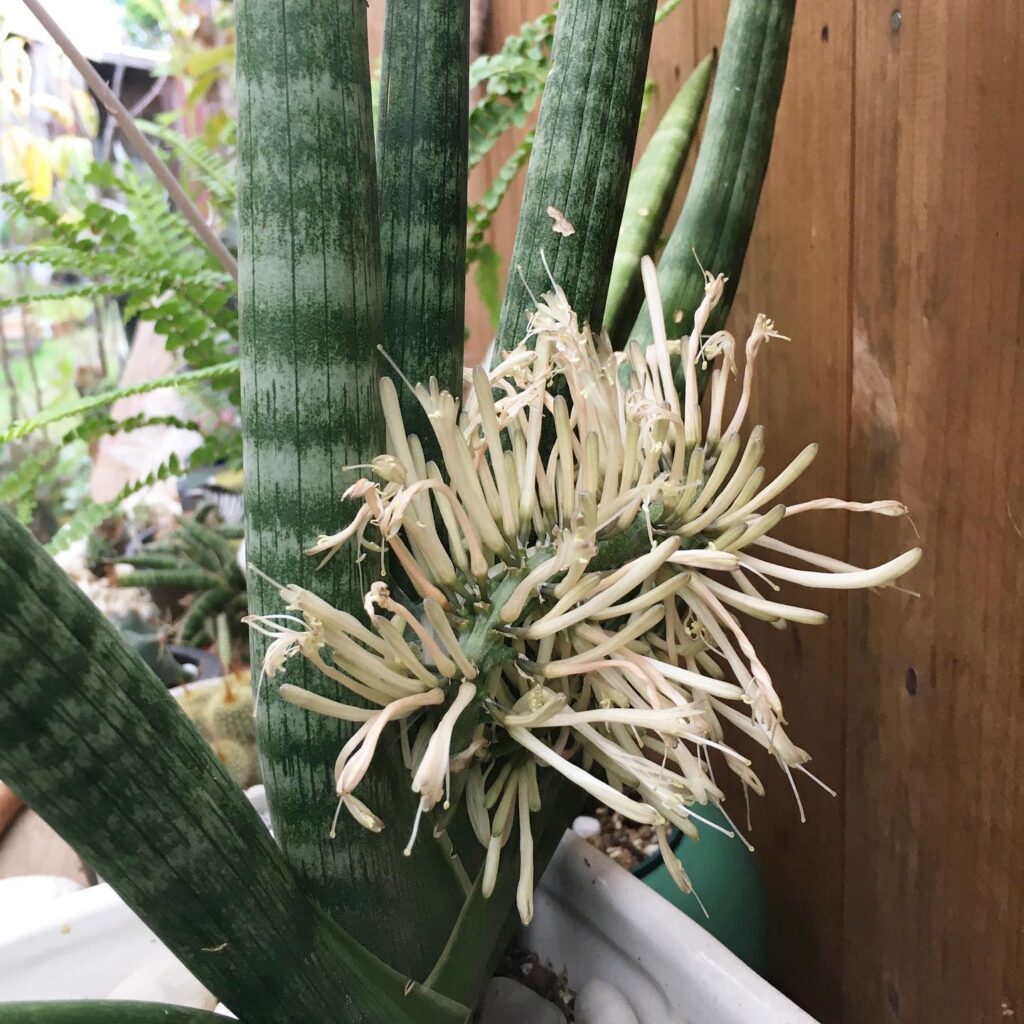
Today, you can choose among numerous sansevieria varieties that differ in size, color, width, and shape of the leaves. Depending on the species, they have green leaves with more or less pronounced transverse or longitudinal irregular patterns or spots with or without yellow borders or pale green leaves with blue and silver tones.
All types of sansevieria are flowering plants, but most home-grown ones rarely or never bloom.
In spring, dozens of small, lily-like, green-white flowers grow on the top of long, firm, erect stems.
At night when fully open, they emit a rather intense but pleasant scent.
Sansevieria Origin
Sansevieria Trifasciata is a very resistant plant species that originates from the steppe areas of Africa. Wild sansevieria grows on rocky and drained soil with minimal rainfall.
Due to such conditions, the plant deposits water reserves in its thickened, fleshy leaves, and the shallow, poorly developed horizontal root is adapted to complex, barren soil.
The plant was named after the Prince of San Sever, an Italian nobleman, writer, and scientist. The Sansevieria plant came to Europe in the 18th century and quickly became popular due to its exotic look, resistance, and modest requirements.
Sansevieria Health Benefits
Regardless of snake plant variety, it is not just an eye-catching home decoration! This multi-useful plant has a positive effect on your health and the environment! Here are just a few benefits that it gives you.
Proven Air Purifier
In its study of the impact of plants on air quality in a room, the American space organization NASA positioned sansevieria in the high third place in the list of plants that have a beneficial effect on the environment as an effective air purifier.
Namely, this plant absorbs harmful air pollutants such as benzene, formaldehyde, and trichloroethylene while enriching the air with oxygen. Therefore, acting as a natural filter, sansevieria improves indoor air quality.
Night Producing Oxygen

Unlike many plants that produce oxygen during the day, in sansevieria, this process takes place during the night. Therefore, it makes it an ideal plant for the bedroom since the level of oxygen in the space is directly related to sleep quality.
Humidity Balance
Transpiration is a process in which a plant returns the moisture it takes from the soil into space through tiny openings in the leaves of the cut called a stoma. Breathing, snake plant enriches (often unpleasantly) dry air in the room, which has a beneficial effect on the skin, eyes, and respiratory tract.
How To Grow Sansevieria Mother In Law’sTongue?
The Mother-in-law’s tongue is a widely accepted houseplant that lies in its growing simplicity, accompanied by a highly striking and decorative appearance.
This almost indestructible plant is one of the most adaptable species you can grow at home, whether or not you are a complete beginner or an experienced gardener.
Its modest requirements are not difficult to meet, so below are the essential tips for its successful cultivation.
Light Requirements
Sansevieria Trifasciata is one of the most adaptable plants for indoor cultivation and thrives in various light conditions.
It means that snake plants grow in low-light places, or under artificial light, even in corners where many houseplants find it difficult to survive due to lack of sunlight!
On the other hand, the fleshy leaves can withstand several hours of exposure to direct sun without leaf surface burns!
Yet, it is best to place your snake plant next to the east or west window, where it can enjoy plenty of indirect bright light.
Soil Requirements
Well-drained soil that does not retain moisture longer than necessary is one of the prerequisites for successfully cultivating the mother-in-law’s tongue.
You can plant it in a ready-made succulent mixture or a standard substrate mixed with sand or perlite.
A homemade mixture of peat moss or coconut coir, one part garden soil or all-purpose potting mix, and two parts of sand will provide optimal conditions for proper growth and development of sansevieria.
Water Requirements
The most common reason for the deterioration of sansevieria is excessive watering, which causes root rot.
Therefore, you could water your sansevieria variety every 15 days or even less often, always allowing the substrate in the pot to dry. In winter, water itis only once a month.
Always pour water directly into the soil to avoid wetting the leaves, as moisture accumulated in the funnel-shaped heart of the rosette can cause bacterial diseases.
Temperatures
In climate zones 10 and 11, the snake plant can grow as a garden plant that overwinters in the soil.
In colder areas, you grow this plant as a typical houseplant protected from low temperatures. The ideal temperature ranges from 55 to 85 F, while the minimum that snake plants can survive is 41 F but only for a short period.
Propagation
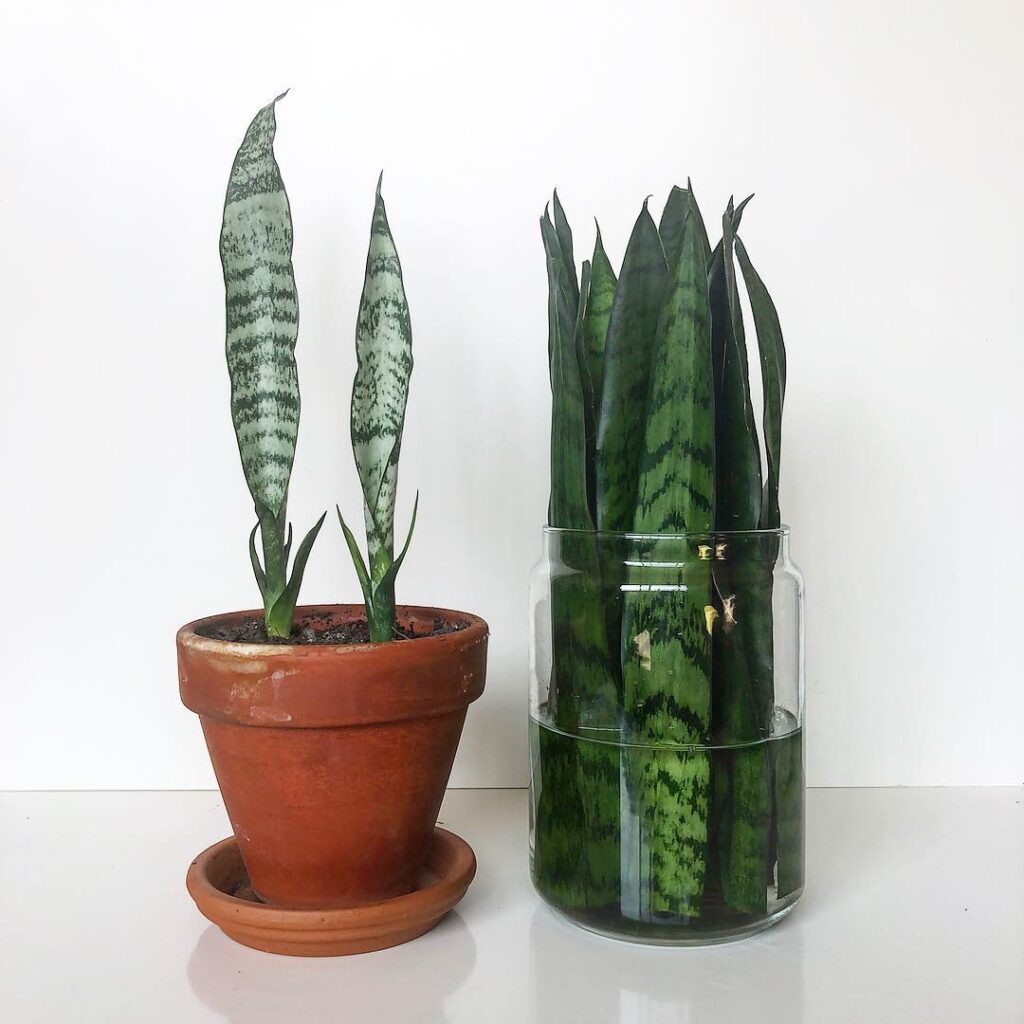
Unpretentious snake plants are easily propagated by dividing the rosette or leaf cuttings rooted in a glass of water.
Interestingly, snake plant varieties with bright yellow borders rooted in water give dark green leaves without light margins. That’s why dividing a rosette is the best way to get identical offspring.
Sansevieria snake plant repotting
Few plants love root bound as much as snake plants! In nature, these plants grow in poor soil, adapted to life with scarce resources.
Therefore, do not transplant snake plants until they have thoroughly filled the pot with new shoots, usually after two or three years.
In addition, choose shallow and wide pots, never large and deep, because the plant spreads horizontally.
And another curiosity: the denser the blossom, the greater the possibility that it will bloom because it seems that stress due to insufficient space stimulates bud formation!
Types Of Sansevieria
The colorful kingdom of these miraculous plants can be divided into two major groups:
- High Sansevieria Trifasciata is characterized by the upright growth of long narrow at the apex pointed leaves with sharp edges that can reach up to four feet in length
- Dwarf Sansevieria Trifasciata are small low plants that form a flat-leaf rosette of chunky fleshy leaves resembling a bird’s nest.
- A particular group consists of the fantastic cylindrical snake plant (Sansevieria Cylindrica), whose thickened foliage is more reminiscent of starfish legs than plant leaves!
1. Sansevieria Patens
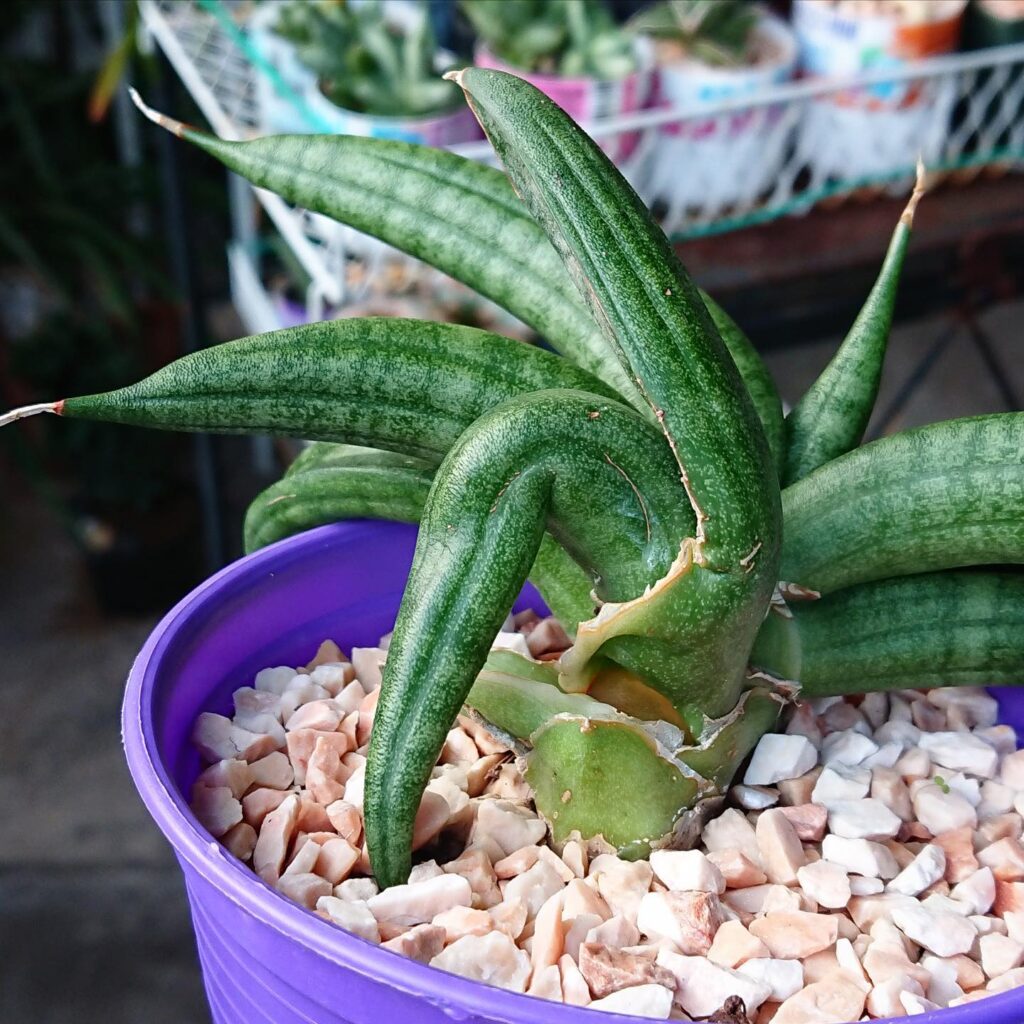
Sansevieria Patens Variegated is an attractive succulent that differs significantly from its broadleaf cousins from the same plant family.
This unique Sansevieria Patens has a wide rosette composed of narrow and long variegated leaves that grow in all directions.
Along the base, broad and narrowed towards the tops, fallen yellow leaves are intersected by longitudinal, irregular dark green lines.
Sansevieria Patens is undoubtedly an extravagant and striking decoration of any space because its almost modernist design is more reminiscent of an art installation than a living plant.
2. Sansevieria Ehrenbergii (Blue Sansevieria Trifasciata)

Unlike other types of sansevieria, Blue sansevieria grows in a fan shape. The long bluish-green leaves slightly bend as they extend outward from the plant. A groove is formed along the inner side of the leaf that can catch water and direct it towards the center of the plant.
The leaves grow from the center of the plant. Each leaf with a pointed tip goes in the opposite direction creating a zig-zag pattern along the stem.
Blue sansevieria, also known as East African Wild sisal, can have leaves up to five feet long in full size, and the local population uses its leaves for fibers and threads for weaving.
3. Sansevieria Cylindrica (African Spear Plant)
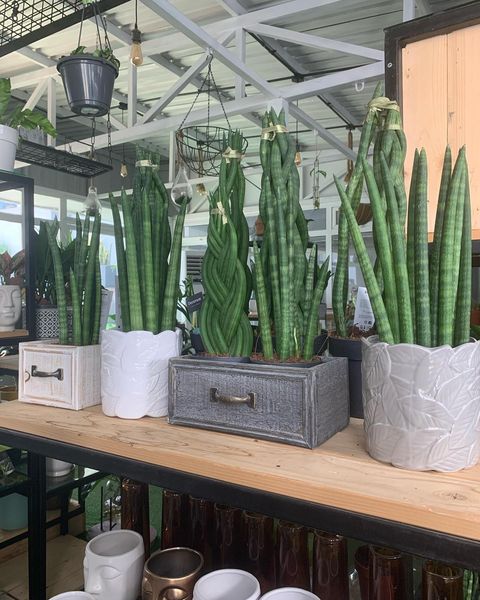
The striking and easily recognizable Sansevieria Cylindrica or African Spear Sansevieria is an exceptional variety in the large group of snake plants.
The unique Spear Sansevieria plant is a sight that is hard not to notice because of its thickened, out-of-this-world cylindrical leaves resembling billiard sticks and almost geometrically correct formation.
The Cylindrical snake plant comes from Angola, where it grows in the wild, forming amazingly dense colonies spreading in space by underground creeping roots.
These slow-growing varieties can reach two or three feet indoors, while plants that grow outdoors reach up to four feet.
Its stick-like, matte leaves are medium green in color with transverse dark green stripes that are more pronounced if you place the plant in bright light.
4. Sansevieria Eilensis
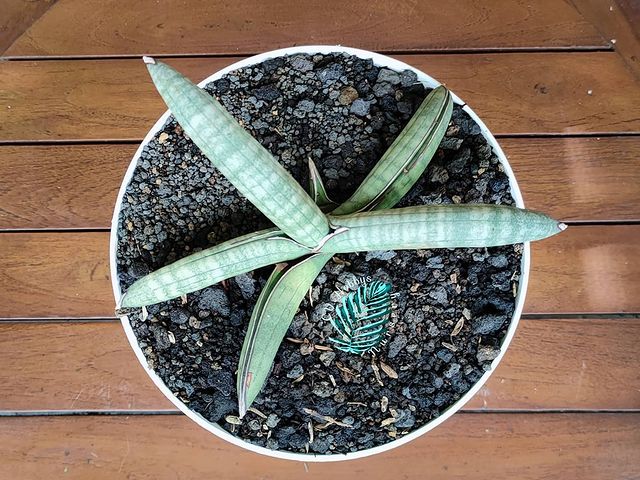
Sansevieria Eilensis has rough downward twisted leaves that fold, allowing the plant to reduce the leaf surface in drought and prevent excessive transpiration. The plant belongs to the dwarf sansevieria group and grows to a maximum of five inches in height.
Its folded leaves resemble bananas but have a gray-green color and are dotted with bright, almost white lines and stripes.
This rare, distinctive small succulent is native to Somalia, where it grows as an endemic species near the town of Eyl, after which it is named.
5. Sansevieria Ballyi (Dwarf Sansevieria)
Like many other snake plants, Dwarf sansevieria comes from Kenya and Tanzania, where this small succulent grows in arid and rocky areas.
In appearance, these types of sansevieria plants resemble a small agave with star-shaped dark green leaves with light green transverse lines.
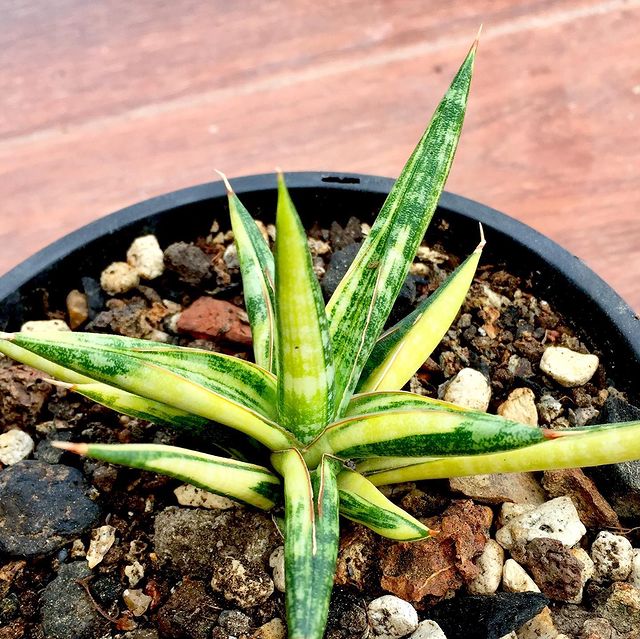
The leaf rosette grows only six to ten inches high and consists of thickened cylindrical leaves that can individually grow between two and four inches long.
Sansevieria Ballyi can bloom with greenish-white fragrant flowers that rise above the leaves on a tall upright stem in the spring.
6. Sansevieria Parva Kenya Hyacinth
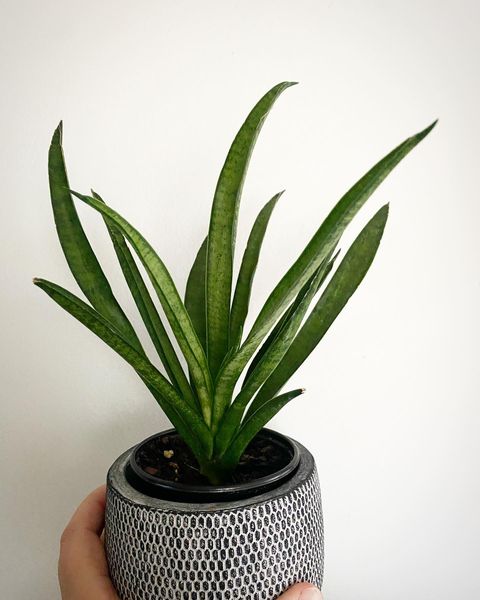
Shaggy rosettes of leaves grow on long pendant runners, so this is one of the few sansevieria that can be grown in hanging baskets.
Thick, narrow, bent leaves are 8 to 12 inches long and can. They can be monochromatic, green, or variegated, as in the ‘Lancet variegated’ variety in which the yellow-green leaves are striped with dark green longitudinal lines.
RELATED: Snake Plant (Sansevieria): How To Get Your Plant To Flower and More
7. Sansevieria Silver Queen
Sansevieria Silver Queen is another excellent cultivar of Sansevieria Trifasciata adorned with the unusual color of thick and broad leaves.
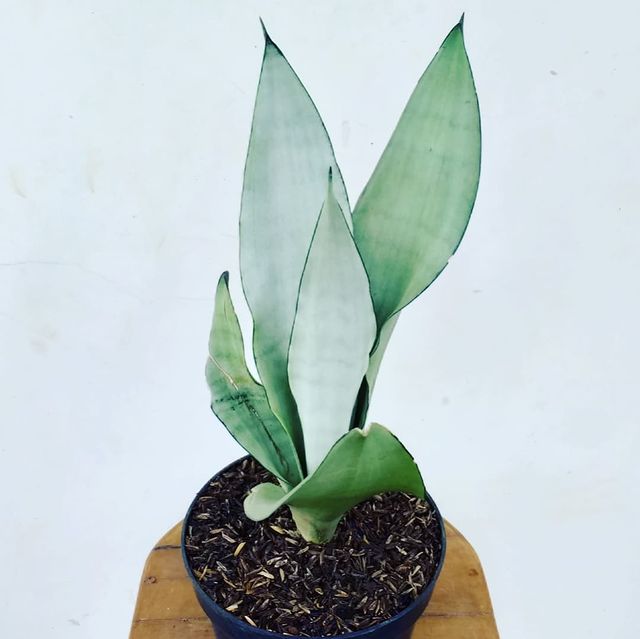
As its name suggests, the tall sword-shaped leaves have a pale green, almost perfect silver hue and are interspersed with discreet darker lines that are not as striking as other snake plants.
Under optimal conditions, the plant can grow up to three feet in height and fall into so-called medium-sized sansevieria snake plants.
Although it does not happen often, the Silver queen can bloom with white flowers gathered in clusters that grow on a high vertical stem.
8. Moonshine Snake Plant
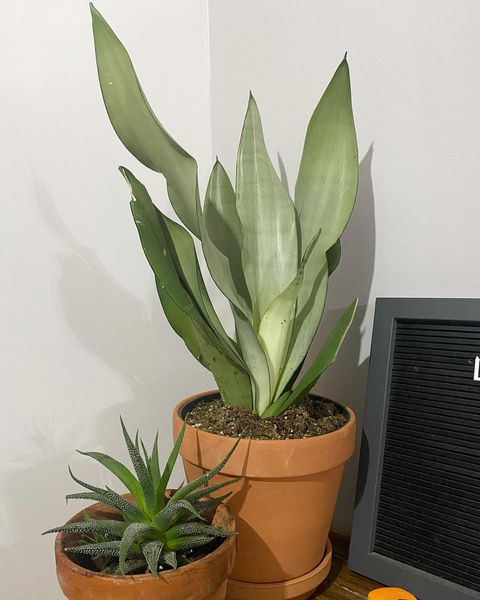
Moonshine sansevieria is another breath-taking snake plant species with its unique gray-green color of thick broad fleshy leaves. This succulent plant, also known as the Silver snake plant, is native to West Africa, where it grows in arid areas with sparse rainfall.
The stunning leaves have pale silver-green color and a thin dark green border.
Tidy, conically folded leaves can grow up to two feet in height and three to four inches wide. Discreet, pale longitudinal stripes of a slightly darker shade of green are almost invisible when the plant receives large amounts of indirect lighting.
Due to its unusual color and elegant fleshy leaves, the Moonshine snake plant especially stands out if you place it among other dark green sansevieria varieties.
9. Sansevieria Trifasciata Laurentii

Sansevieria Trifasciata Laurentii, often called the Striped snake plant or Sword sansevieria is one of the most commonly grown snake plant varieties.
It originates from the rocky, dry regions of West Africa, where it forms dense upright colonies. This erect variegated snake plant has up to four feet long, sword-like green leaves intersected by dark green bands, which is a striking contrast to the yellow edges of the leaves.
The shiny leaves form little rosettes resembling a chip composed of six to eight leaves that can be slightly irregularly twisted.
10. Sansevieria Trifasciata Futura Superba
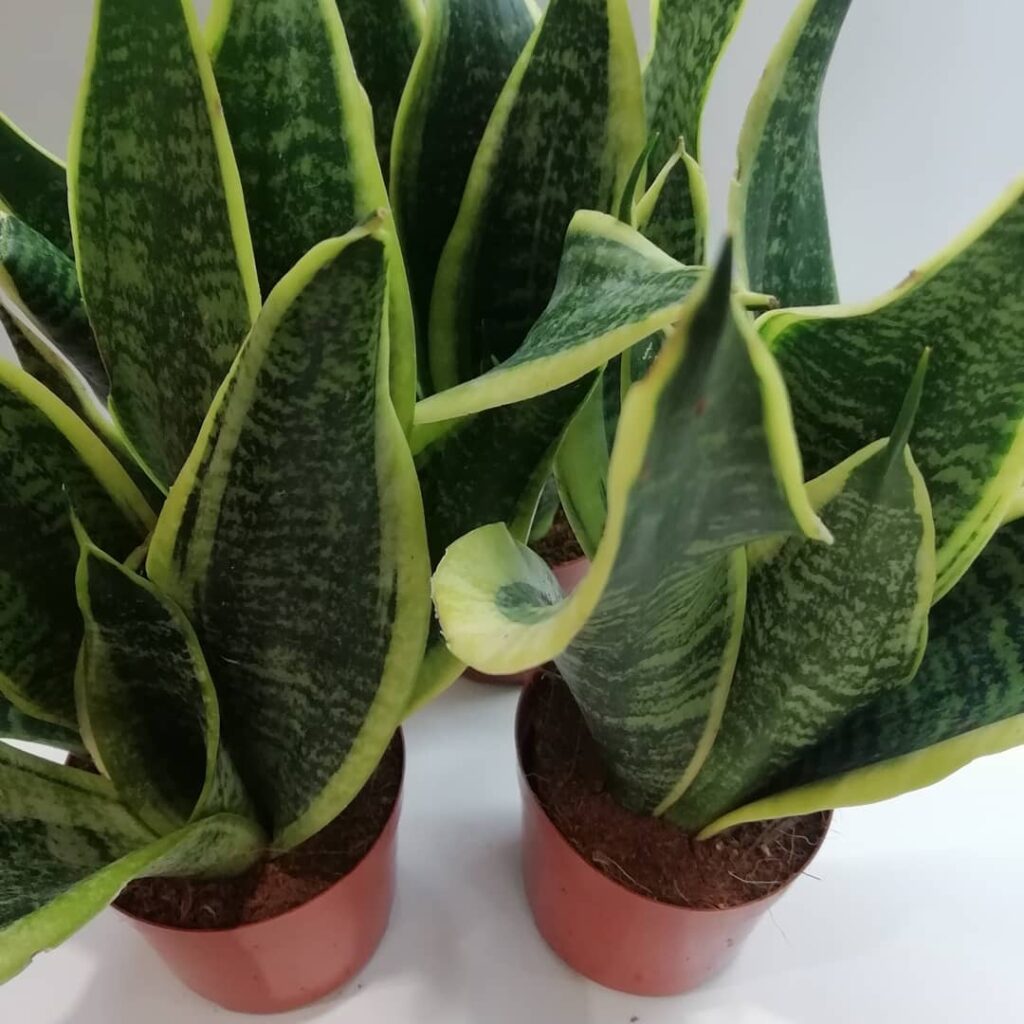
The plant has unique short, firm, and fleshy succulent sword-like leaves bordered with a creamy-white to yellow stripe.
A mature plant can grow between 15 and 18 inches in height and 19 to 12 inches in width. With a pronounced light border, a charm to this plant is given by transverse dark green stripes resembling the ECG line.
Due to its size and slow growth, it is a sansevieria variety that easily fits into any home or office and combines well with other houseplants. It offers the stability of form and structure throughout the year.
11. Sansevieria Cylindrica Boncel
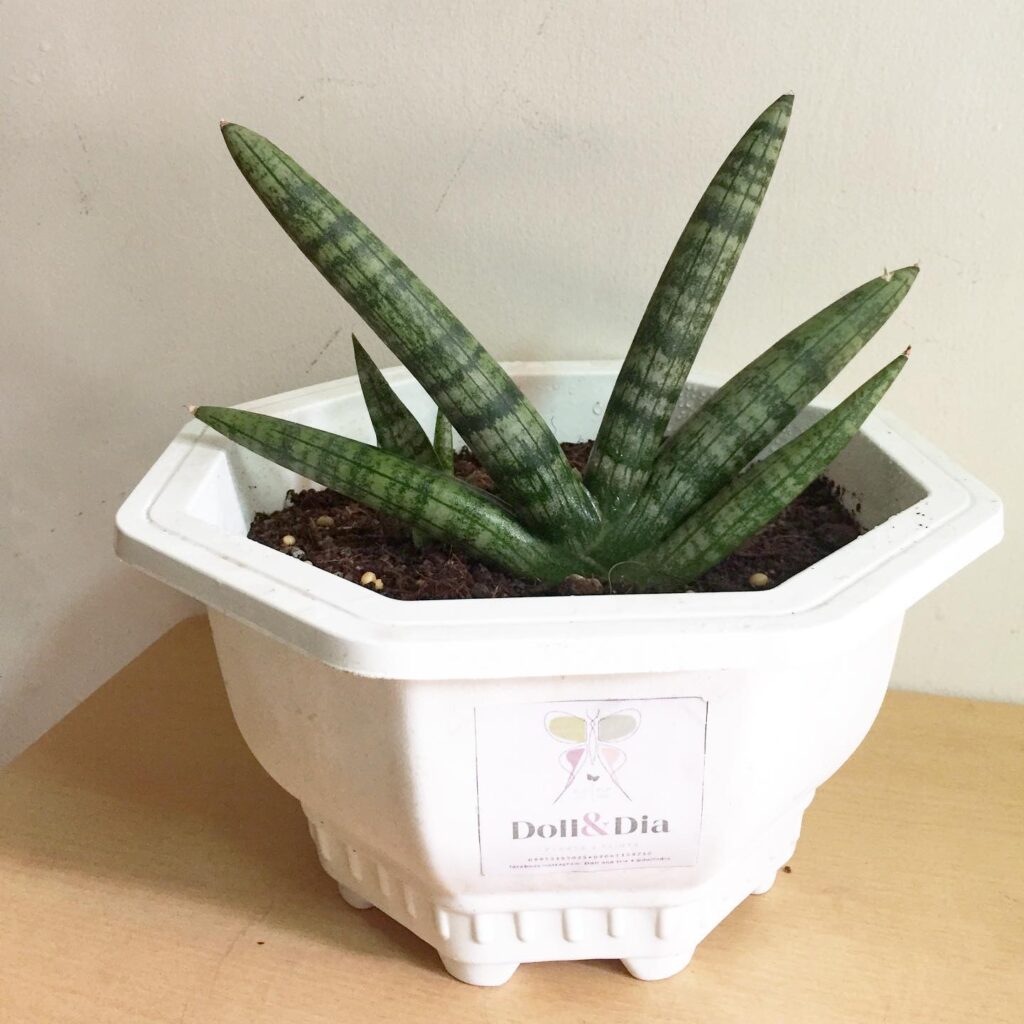
This charming little plant, Sansevieria Cylindrica Boncel, is a dwarf version of the much larger Sansevieria Cylindrica.
The leaves look like pointed fingers and are considerably shorter and create a fan-shaped rosette.
Each cylindrical leaf can grow a maximum of 8 to 12 inches, and the whole plant grows a total of up to 20 inches in height and the same amount of width.
In addition to the unusual shape with leaves that extend on all sides, the pale green transverse bands on the leaves are a bonus decoration making this dwarf snake plant a charming decoration for any interior.
Unlike most snake plants, Sansevieria Cylindrica Boncel has matte foliage without gloss.
12. Sansevieria Trifasciata Futura Robusta

Sansevieria Frifasciata Futura Robusta is actually a slightly smaller variant of Sansevieria trifasciata laurentii.
This plant can grow only one foot in height, but the pattern on the leaves is very similar. Both plants are adorned with a very pronounced wavy dark-green stripe on a lighter silvery-green background.
The broad and somewhat chunky fleshy leaves may be slightly curled, forming a densely compacted rosette.
13. Sansevieria Kirkii (Star Sansevieria)

Star sansevieria is another unusual snake plant variety. The plant is native to Tanzania and has broad fleshy dark green leaves with light spots instead of the usual stripes on the leaf surface.
It forms a low star-shaped rosette, after which it got its name. The leaves have a thin brown border and are slightly or markedly curled upwards like a banana bowl.
The Star Sansevieria Silver Blue variety looks especially interesting due to unusual, chunky, thick blue-green leaves with dark green spots and longitudinal lines.
14. Sansevieria Cleopatra
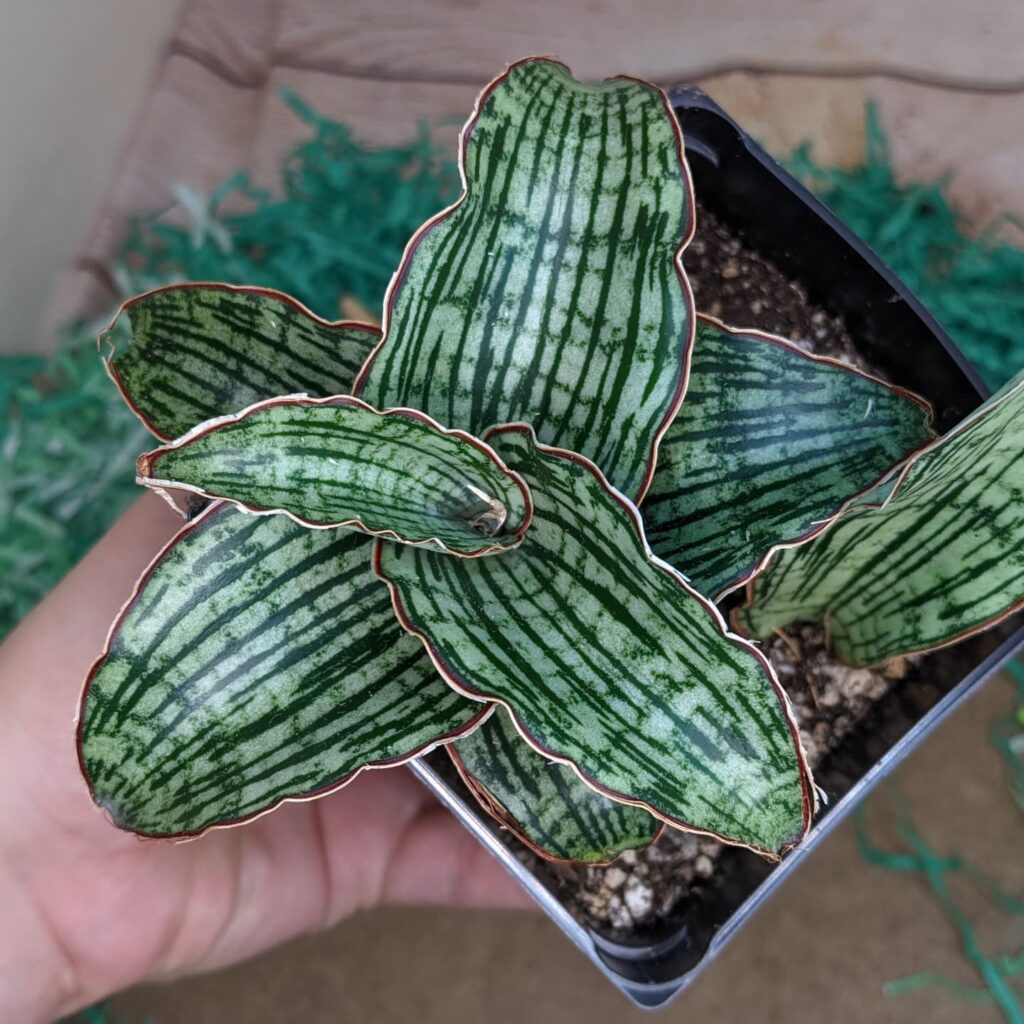
Sansevieria Cleopatra is a compact snake plant with low growth and an almost perfect leaf rosette of chunky thick and pointed leaves with an irregular or slightly curled edge.
Particularly intriguing is the variegation of its leaves, where on a light green background, short vertical and horizontal lines intersect in an almost checkered pattern.
The Cleopatra sansevieria species belongs to a group of rare types of sansevieria. If you come across it, do not miss the chance to add it to your sansevieria plant collection!
15. Sansevieria Trifasciata Black Gold (Viper’s Bowstring Hemp)
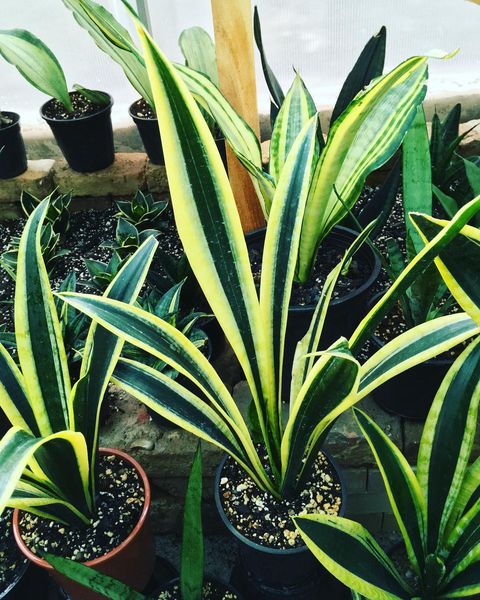
Sansevieria Trifasciata Black gold is a snake plant variety that differs from other plants by a highly intense yellow-gold, wide border on dark green upright lanceolate leaves densely compacted next to each other.
This variety of snake plants is commonly called Viper’s Bowstring Hemp.
The pronounced contrast between the color of the leaf and its border creates a striking image, especially in adult specimens that can grow up to three feet in height.
Although the leaves intersect irregular lighter lines, they are less noticeable than many other sansevieria varieties.
16. Sansevieria Trifasciata Twisted Sister
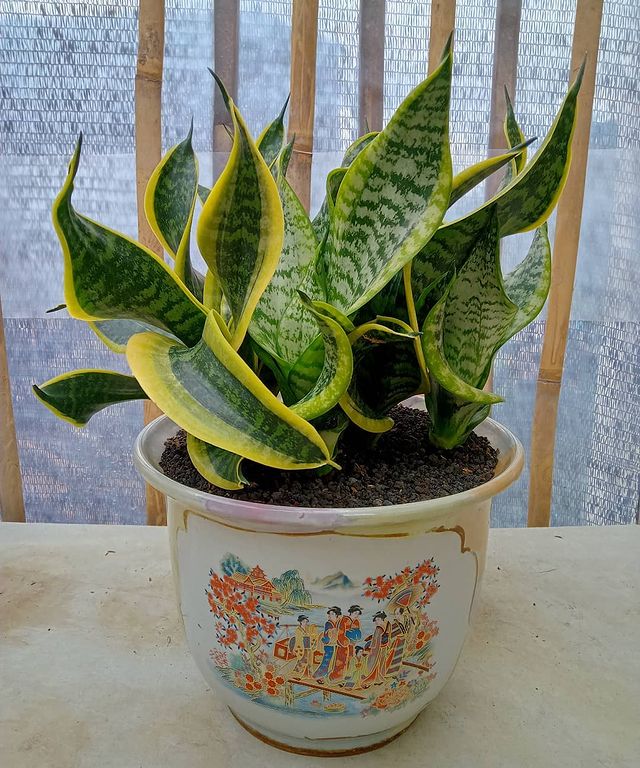
The pattern of the Twisted Sister snake plant leaves is very reminiscent of the Golden Hahnii, but the leaves are gracefully curled, giving the plant a messy charm.
Sansevieria Trifasciata Twisted Sister also belongs to the dwarf sansevieria varieties. It grows up to 15 inches in height with many new rosettes that adjoin each other and the central rosette.
Dark green glossy leaves bordered by a thick yellow band usually have transversely, irregularly striated leaves in a light green hue.
This striking, hard-to-find Twisted Sister is originally from Madagascar. Because of its playful, almost messy form, so different from other ‘neat’ snake plants, Sansevieria Twisted Sister is high on every collector’s list.
17. Zeylanica Snake Plant (Sansevieria Zeylanica Ceylon Bowstring)
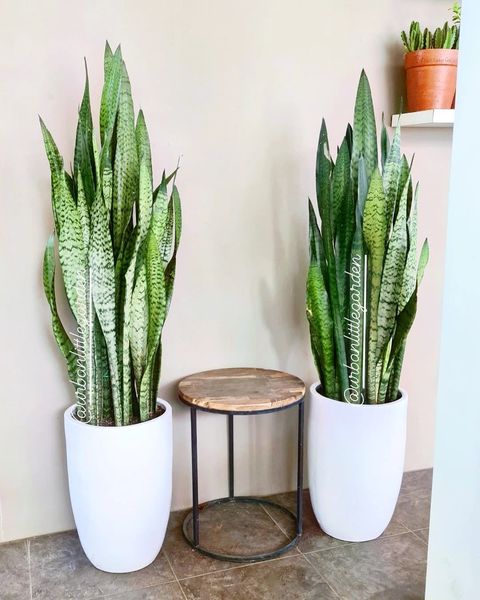
Zeylanica snake plants, also known as Zeylanica Ceylon Bowstring Hemp, are native to Southeast Asia, particularly India and Sri Lanka.
The plant has erect, long, narrow sword-shaped leaves with wave-like light green transverse bands. Each leaf with pointed tips can grow up to two and a half feet long and one inch wide.
At first glance, this plant strongly resembles its close relative, Sansevieria Trifasciata, with almost identical growth habits, dark green leaves color, and light green stripes.
Despite the similarities, the Zeylanica Sansevieria snake plant is a different variety, and the main difference is in the size of the leaves. Sansevieria Trifasciata is a plant whose leaves can grow to an impressive five or six feet under appropriate conditions, while Zeylanica is much more modest in size.
18. Sansevieria Trifasciata Golden Hahnii (Bird’s Nest Sansevieria)
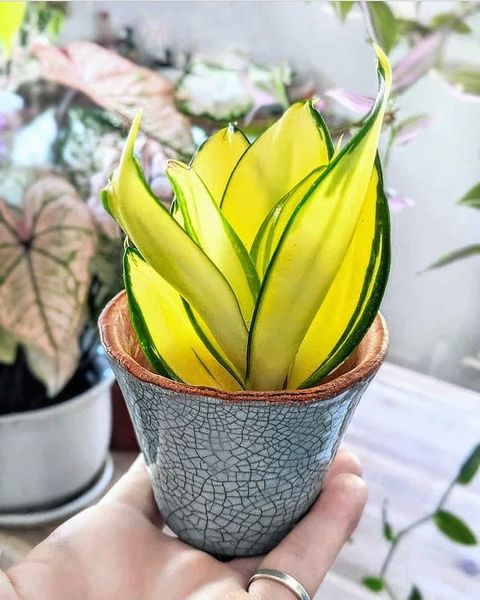
Among the dwarf snake plant varieties, the Hahni series stands out due to its compact growth and elegant rosette composed of fleshy two inches wide pointed succulent leaves.
The whole plant does not grow more than 10 inches in height and width. The glossy dark green leaves with a wide yellow border and longitudinal stripes are arranged so that the plant is nicknamed Golden bird’s nest sansevieria.
New rosettes of broad leaves develop laterally from the rhizome root, creating irresistibly dense and compact colonies of beautiful bright yellow, longitudinally striped leaves.
Like all other sansevieria plants, the Golden Bird’s Nest snake plant can give greenish-white flowers with a pleasant scent on a high stalk in mid-summer or early autumn.
19. Sansevieria Gracilis
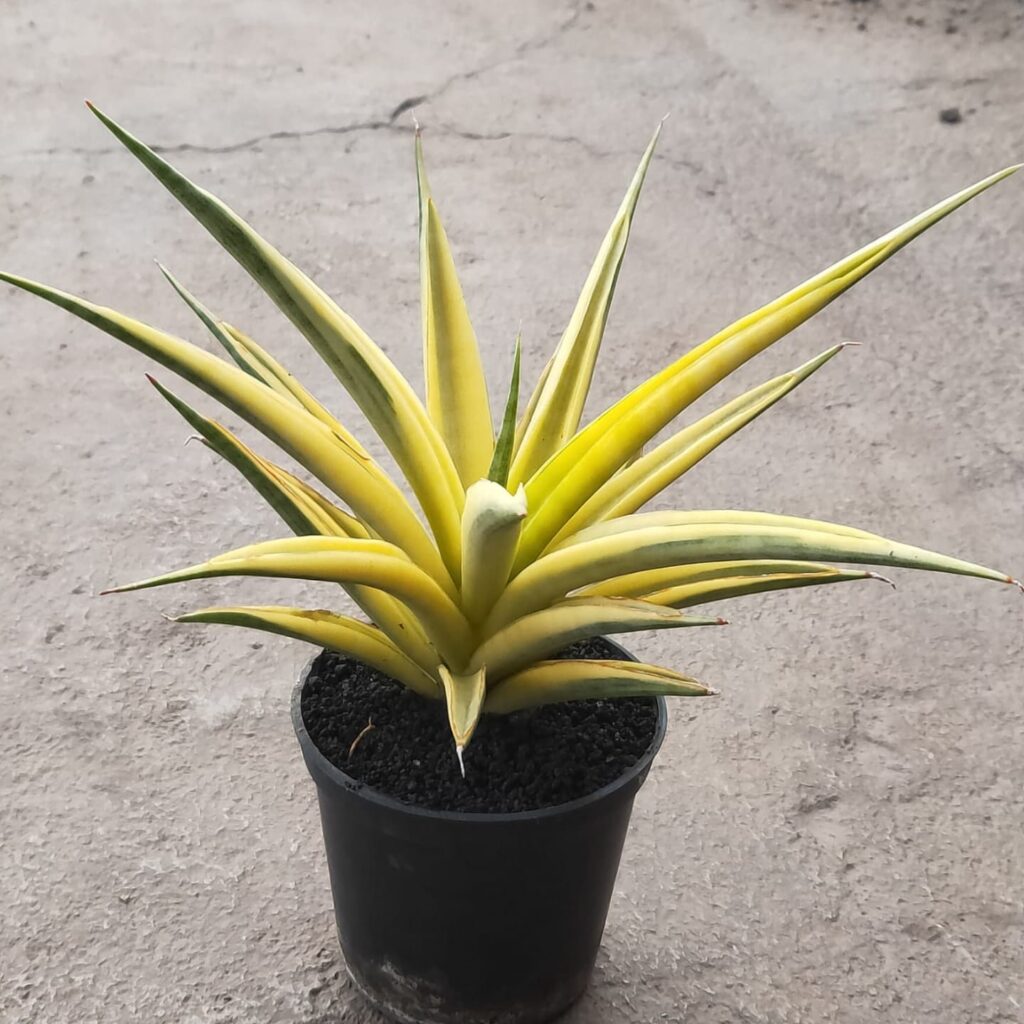
Originating from the dry bushlands of tropical east Africa, Sansevieria Gracilis forms a rosette of eight to twelve conical inward twisted and spirally arranged light green leaves with horizontal irregular dark green lines.
The epithet gracilis, in its name, comes from the Latin language and suggests its slender, thin leaves.
In nature, the stemless plant spreads by aerial or subsurface stolons, forming mats of leaves. Potted plants like to escape from the container with outward growing stolons.
20. Sansevieria Masoniana
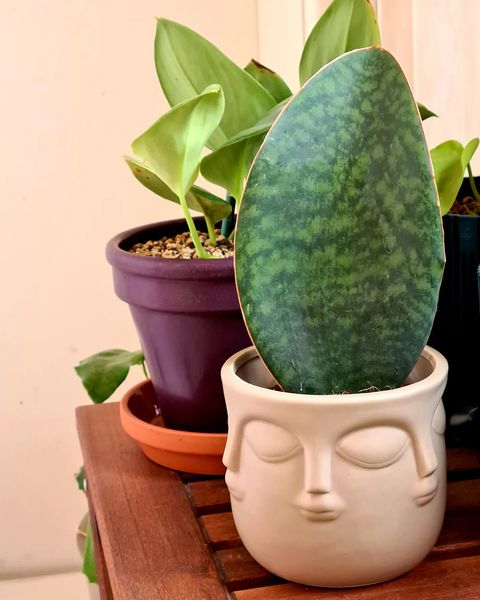
Sansevieria Masoniana is a real collector’s gem because you can not find it often on sale. Due to its large, unusually shaped leaves resembling fins, the plant is also known as a Whale Fin or Sharkfin Plant. Another common name for the plant is Mason’s Congo since the plant originates from the Democratic Republic of Congo in Central Africa.
The enormous variegated leaves of sansevieria masoniana can grow up to four feet in length and 10 inches wide. They have a beautiful dark green color with irregularly arranged light smudged green spots and tiny purple boundaries.
Like other snake plants, Sansevieria Masoniana grows very slowly, so it can take years before the plant reaches its full size. However, due to its unique appearance, it is worth the wait.
21. Sansevieria Trifasciata Whitney (Silver Flame Snake Plant)
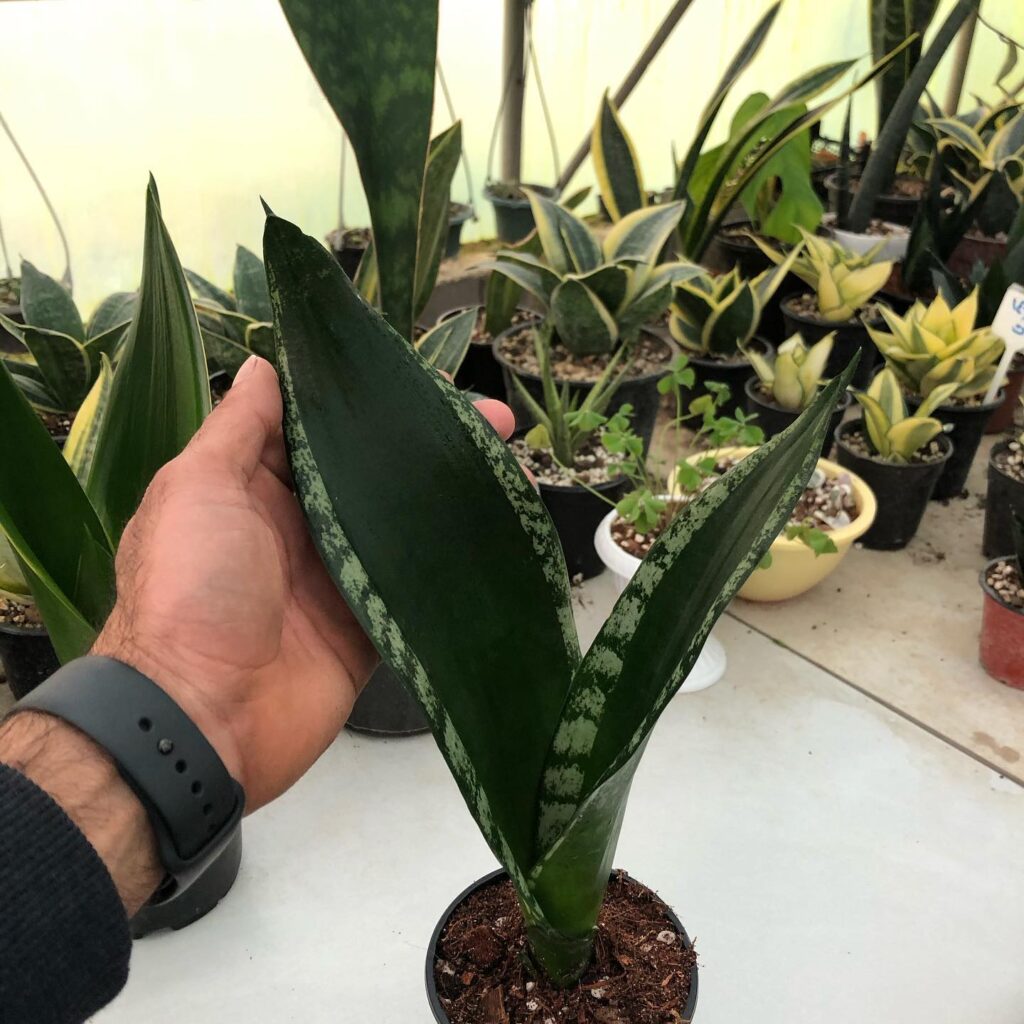
Sansevieria Whitney is a low compact plant that grows up to one and a half feet tall. Leaf rosettes usually consist of four to five thick, leathery, shiny dark green leaves.
Sansevieria Whitney from other snake plant varieties is the border on the leaves with striking white spots and dots.
Another characteristic of this plant is that it grows slightly faster than other varieties and usually gives four to five new leaves during one season. Like other sansevieria plants, it is adaptable and easily fits into standard home conditions. Due to its dark leaves, it can thrive in highly shady places without disturbing its shape or causing the leaves to stretch.
RELATED: Hello, Why Is It Yellow? 5 Reasons Why Your Sansevireia Is Changing Color
22. Sansevieria Hyacinthoides
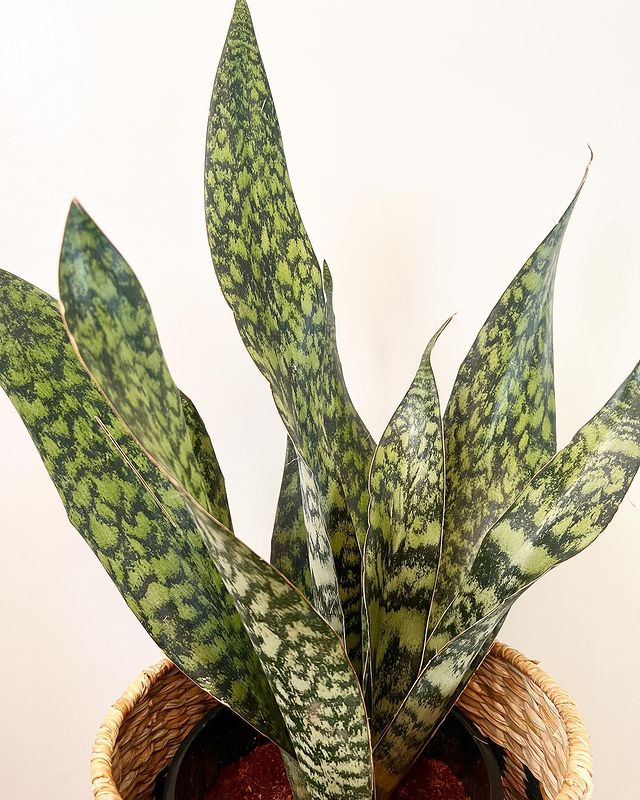
Sansevieria Hyacinthoides, commonly known as African Bowstring Hemp, has erect two feet long and three inches wide lanceolate or oval leaves appearing in pairs. The root and leaves are used in traditional medicine to treat toothache and earache, infections, and stomach problems. Leaf fibers are also used to make strings due to their durability.
Unlike other types of snake plants, this is a fast-growing species, and in areas with a mild climate, it can grow outdoors as an attractive addition to the rockery.
Frequently Asked Questions
Is Rhino Grass a sansevieria variety?
Yes, it is. It is called Sansevieria Desertii and has thickened foliage resembling the rhino horn.
What are the rarest types of snake plants?
The rarest type of snake plant is Snake Plant ‘Sayuri,’ a sansevieria variety with soft silver foliage and blue and white variegation.
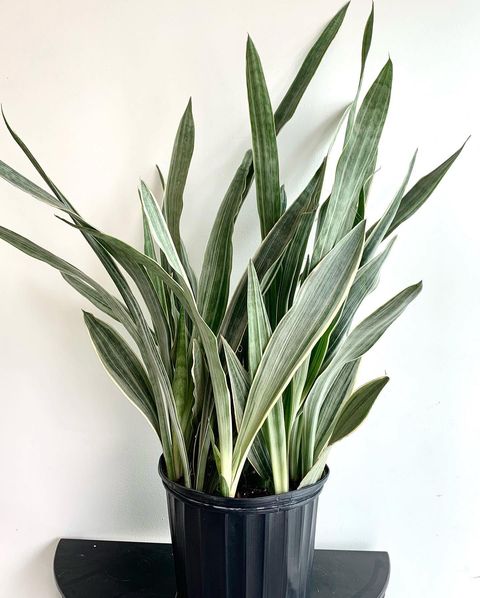
Can you plant different snake plants together?
Yes, you can! Moreover, by combining sansevierias of different shapes and colors, you can create a unique indoor sansevieria garden that you will easily maintain due to their modest care requirements!
Why is sansevieria called Mother-in-law’s tongue?
The sharp edges of the leaves in Sansevieria Trifasciata inspired the name Mother-in-law’s tongue.
What plants look similar to snake plants?
Although used for all types of sansevieria, the name snake plant most often refers to Sansevieria Trifasciata. Among the plants that resemble sansevieria and are not of this genus are Aechmea Fasciata from the Bromeliad family, Mauritius Hemp (Furcraea Foetida), Zebra plant (Cryptanthus Zonatus), and many other plants with succulent striped leaves.
Is Sansevieria toxic to pets and humans?
Yes, it is! The leaves of sansevieria contain saponins which act as a natural fungicide and insecticide and cause digestive ailments like vomiting and diarrhea if it gets into the digestive tract of humans or pets.
In addition, the juices from the leaves can cause a rash or itching on the skin. Therefore, when handling the plant, be sure to wear gloves!
Did you like our list of Types of Sansevieria? Check out our other articles:
13 Types of Monstera To Boost Your Surroundings With Extravagant Greenery
Top 10 Types of Elm Trees| Elm Tree Uses, Pictures and Identification Guide







